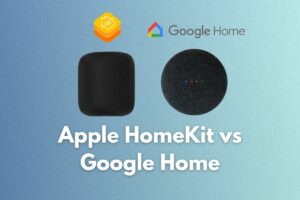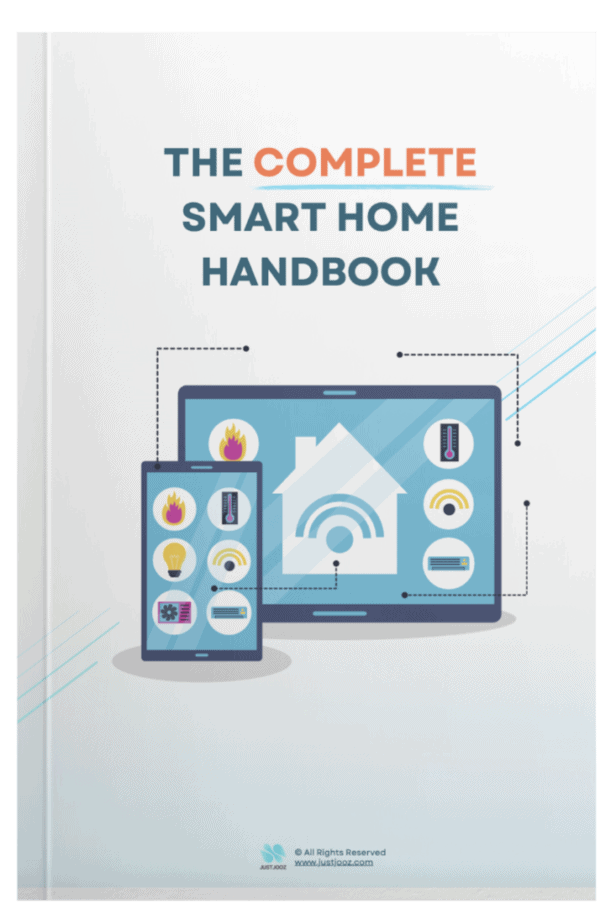5+ Best Smart Home Protocols
We’re reader-supported; we may earn a commission from links in this article.
Smart home protocols have become essential for our modern homes as we continue integrating Internet of Things (IoT) devices into our daily lives.
Smart home protocols today include Z-Wave, Zigbee, Bluetooth, BLE, Wi-Fi, and Thread, which provide the medium in which smart home devices communicate and work together.
Let’s dive in and explore these home automation protocols, their key features, and how they stack up against each other!
What is a Smart Home Protocol?
A smart home protocol is a wireless protocol which devices in a smart home speak to each other to relay commands and information.
This is what allows your smart lights to know when to switch on or your home security system to notify you if there’s an unusual activity.
It’s similar to the different languages among people; smart home devices have different protocols they use to communicate!
Each protocol has its own unique characteristics, making it more suitable for specific tasks and device types.
What smart home protocols are there?
Here are the key differences in some popular smart home protocols:
| Smart Home Protocol | Key Features | Pros | Cons |
|---|---|---|---|
| Zigbee | Low-power, high-security, mesh networking | Can connect a large number of devices | May suffer from interference with Wi-Fi networks |
| Z-Wave | Low-energy, mesh networking, 232 device limit | Less prone to interference | May have slower data transfer rates |
| Bluetooth | Short-range communication protocol, low energy | High compatibility with many devices | Limited range, can connect fewer devices at once |
| Wi-Fi | High speed, versatile, and wide coverage | High speed and large range | High energy consumption, possible interference |
| Thread | Low-power, secure, and scalable IPv6-based protocol | Uses existing Wi-Fi networks | Still not widely adopted, requires a border router |
Zigbee
Zigbee is a popular choice for smart home networking due to its low power consumption and high security.
Capable of creating a “mesh network,” Zigbee devices can communicate with one another directly without the need for a central hub.
This creates a more reliable network as the devices can ‘hop’ messages to one another – if one device fails, the network can still operate.
This feature makes Zigbee particularly suitable for larger homes with many smart devices. Another key feature of Zigbee is its power efficiency; devices using Zigbee often have excellent battery life.
However, Zigbee operates on the crowded 2.4 GHz frequency along with Wi-Fi and other devices, which can sometimes lead to interference.
Z-Wave
Z-Wave, much like Zigbee, is a mesh networking protocol primarily used for home automation.
One of the standout features of Z-Wave is its low frequency (around 900MHz), which means it is less likely to experience interference from other wireless devices in your home.
In terms of range, Z-Wave devices trump Zigbee devices by offering a range of up to 100 meters.
However, Z-Wave is slower in data transfer rates compared to others and has a limit of 232 devices on a single network.
Bluetooth
When it comes to smart home protocols, Bluetooth is often overlooked despite its widespread use in smartphones, tablets, and computers. In a smart home context, Bluetooth is praised for its low energy consumption and high compatibility rate.
However, it’s short-range (usually around 10 meters) and the limitation of connecting fewer devices at once can be a downside, especially for larger homes or high-density smart homes.
Bluetooth Low Energy
Bluetooth Low Energy (BLE), also known as Bluetooth Smart, is a power-efficient variation of the classic Bluetooth technology. This protocol has been specifically designed for short-range communication between devices, making it ideal for smart homes.
The low energy consumption of BLE means that devices using this protocol can operate for months or even years on a single battery. BLE has a similar communication range to classic Bluetooth, typically around 100 meters, but uses significantly less power, making it a more sustainable choice for smart devices that transmit small amounts of data intermittently.
Wi-Fi
Wi-Fi is a high-speed protocol that most of us might be familiar with, considering its ubiquitous presence in our homes and offices.
In fact, its universal adoption is what makes it a versatile choice for smart homes. Most smart devices that require a high bandwidth, like smart TVs and cameras, often use Wi-Fi.
One thing to note, however, is that Wi-Fi consumes a lot of power and could create interference with other devices.
Thread
Thread is a relatively new player in the smart home protocol field. It’s a low-power, secure, and scalable protocol that works as a layer on top of existing Wi-Fi networks for connectivity.
Thread creates a mesh network similar to Zigbee and Z-Wave but is designed to be more robust and secure.
Thread can easily make a smart device work across multiple home automation brands such as Amazon Alexa, Apple HomeKit, and Google Home.
However, its adoption is not as widespread yet, and it requires a specific border router to connect to the wider internet.
Comparing Smart Home Protocols
When selecting a smart home protocol, it’s important to consider the specific needs of your home.
For instance, if you have a larger home or plan to use a significant number of connected devices, like Z-Wave or Zigbee with their mesh networking capabilities would be a solid choice.
Zigbee has the added advantage of high security and power efficiency, though it can face interference issues due to operating at the 2.4GHz frequency.
On the other hand, if your smart home requirements are more modest or you’re just starting out with smart home technology, Bluetooth or Wi-Fi might serve you well.
Bluetooth is an excellent choice for smaller setups due to its high compatibility rate and energy efficiency, while Wi-Fi, with its high speed and universal adoption, would work best for devices demanding high bandwidth.
Thread, although not as widely adopted yet, offers potential with its strong security and scalability, and the ability to use existing Wi-Fi networks for connectivity. However, a specific border router is necessary to connect to the wider internet.
I personally would recommend you to start with one, then work your way up to more. Start with WiFi first, then introduce other smaller smart home protocols like Zigbee to implement more granular control over household items.
Start with WiFi, then Bluetooth, then Zigbee, Z-Wave, and Thread last. This is in increasing order of difficulty of setup, considering their usability and practicality in your smart home.
Future of Smart Home Protocols
Looking ahead, the future of smart home protocols seems to be moving towards unification. The Project CHIP (Connected Home over IP), a joint effort by Apple, Google, Amazon, and the Zigbee Alliance, aims to create a universal standard for smart home devices.
This unified protocol will ensure better compatibility and secure connectivity across devices and brands.
While it’s a good step in the right direction, I would not dare say that any single protocol is perfect – a combination of these protocols may be needed to achieve your desired smart-home setup.
For instance, you might use Wi-Fi for devices that need to transfer large amounts of data quickly, like your smart TV or security cameras.
Bluetooth could be used for devices close to your main hub and requiring less energy, like a smart thermostat or your smart lights.
In my opinion, don’t purchase any tech products for the promise of a future update, as you might get disappointed if it doesn’t happen.
Importance of Interoperability in Smart Home Protocols
In the context of smart homes, interoperability becomes crucial. It refers to the ability of different smart devices and systems to communicate and work together seamlessly, regardless of manufacturer or protocol.
Good interoperability not only ensures a smooth and efficient operation of your smart home but also enhances the user experience by allowing you to control all devices from a single platform. This is particularly beneficial as the number of smart devices in homes increases.
Furthermore, interoperability fosters innovation and competition in the tech industry. It allows manufacturers to focus on creating the best products without worrying about compatibility issues.
However, achieving full interoperability remains a challenge due to the wide range of smart home protocols available. That’s why initiatives such as Project CHIP, which aim to create universal standards, are a substantial step forward in enhancing interoperability.
Final Thoughts
In conclusion, each smart home protocol has its unique strengths and weaknesses, and the choice would largely depend on your specific home setup and device requirements.
Whether it’s Zigbee, Z-Wave, Bluetooth, Wi-Fi, or Thread, the key is to find a protocol that best suits your smart home needs.

Justin Chia
Justin is the author of Justjooz and is a data analyst and AI expert. He is also a Nanyang Technological University (NTU) alumni, majoring in Biological Sciences.
He regularly posts AI and analytics content on LinkedIn, and writes a weekly newsletter, The Juicer, on AI, analytics, tech, and personal development.
To unwind, Justin enjoys gaming and reading.






